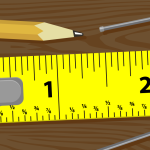You have bought a new, very expensive, and heavy painting, or let’s say your children have made something very beautiful in their art class. Now you want to hang it up on your wall for the entire world to see and marvel at its beauty, but then suddenly a question arises, and that is what if the bolt used is not strong enough to hold it and a couple of days later it fell down, then what?
Everything will be lost.
Now that we know the question, it is time to answer it. If you are planning to hang something heavy on your wall, whether it is drywall or plaster wall, there are two most common options, and those are Molly Bolts and Toggle Bolts. Here comes another hurdle, and that is which is better and what the difference is, and how to make sure you end up choosing the right one.
In this blog, we will compare both Molly Bolts and Toggle Bolts in terms of their features, advantages, disadvantages, and applications.
Battle of The Bolts: Molly Bolt vs Toggle Bolts
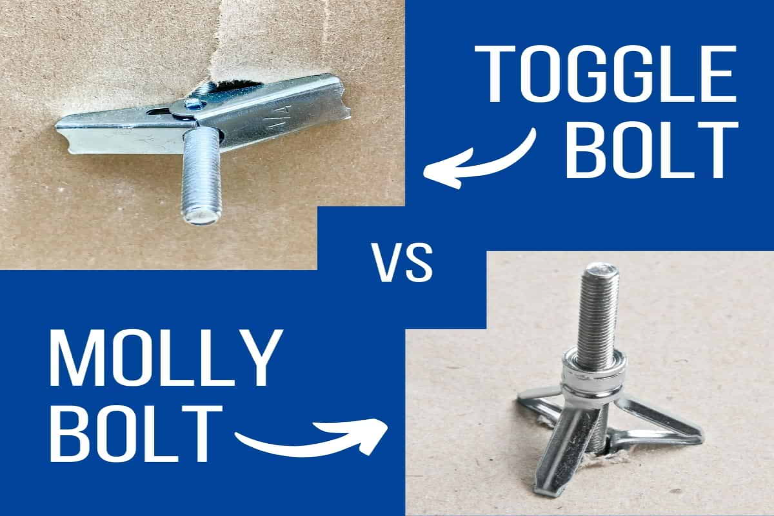
Before we go into all depths and learn more about these bolts, let’s see what they mean in a very simple and general way.
Basically, a Molly Bolt has a metal sleeve that expands inside the wall when you drill the center screw into its place where as a Toggle Bolt has a spring-loaded wing, these are the toggle and are affixed to the bot or the machine screw. The toggle springs open against the interior of the wall and acts as an anchor for the hanging hardware.
Now that we have a basic idea let’s get in and know more about these bolts to make the right decision and hang things that are waiting to be hung on your majestic walls.
What is a Molly Bolt?
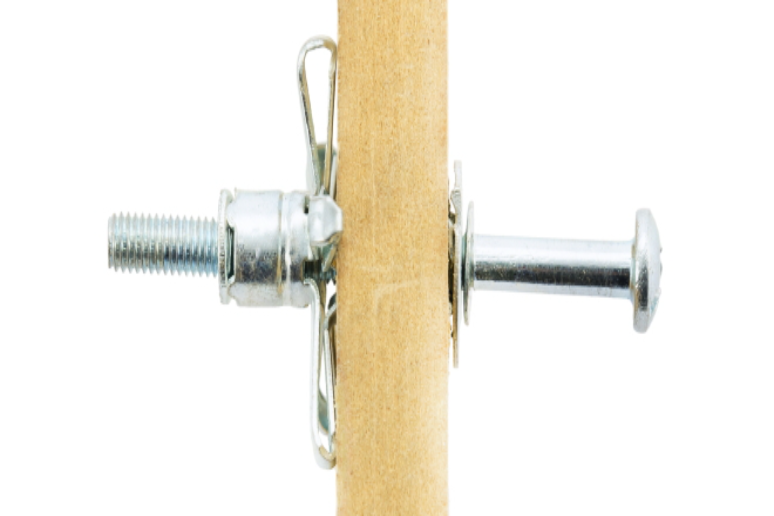
A hollow wall anchor that consists of a metal sleeve and a screw is a Molly Bolt. These metal sleeves have slits that allow it to expand when the screw is tightened and installed in its place. This creates a strong grip on the inner side of the wall and stops or prevents the anchor from pulling out.
They come in different sizes and lengths depending upon the type of wall, the thickness of the said wall, and load capacities. Molly bolts are usually made of zinc-plated steel or brass to prevent to bolt from corrosion over time.
What is a Toggle Bolt?
Just like a Molly Bolt, Toggle Bolt is another type of follow wall anchor that is made up of a bolt and a pair of spring-loaded wings. These wings are folded when inserted through a hole in the wall, and then they open up behind the wall to create a large bearing surface. The bolt is then tightened to secure the anchor and the object to be hung.
They also come in different sizes and lengths depending upon the type of wall, the thickness of the said wall, and load capacities. Toggle bolts are usually made of zinc-plated steel or stainless steel to prevent to bolt from corrosion over time.
Similarities Between the Two: Molly Bolts and Toggle Bolts
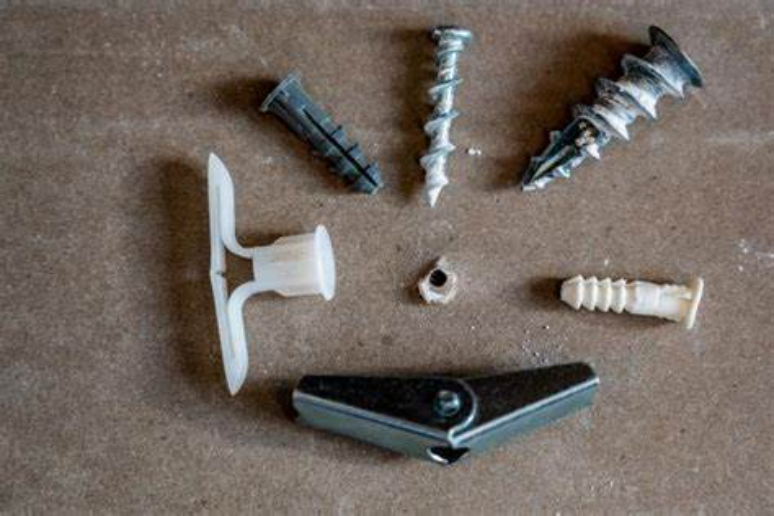
1. Fixing into Cavity Walls
The main purpose why we are discussing both these bolts is fixing into cavity walls. In today’s time, this usually comes down to the fact that one is stronger than the two when no stronger material is behind.
2. Bolts
Both these Bolts need two very important components to work. The wall fixing, which could be any of the two, can be Molly or Toggle and the bolt itself. Both fixings use the same type of bolt instead of a screw.
3. Large-Sized Wall Fixing
As far as wall fixings go, the Molly and the Toggle Bolts are both of a larger size. A number of factors will influence the strength of each of the fixings, such as the material it is made from and its size. It should be noted that both of these types of wall fixings are a step up from smaller plugs, screws, and threaded inserts. The bolt is thicker, and the anchor stronger,
Difference Between the Two: What Sets Them Apart
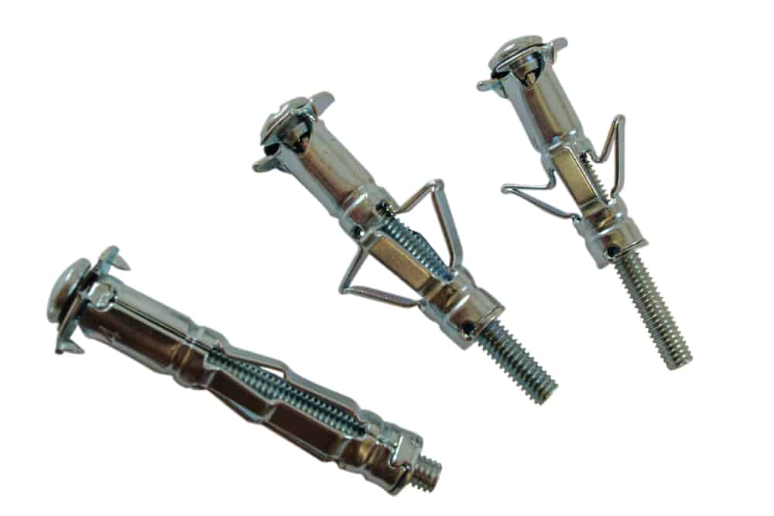
1. Strength
Both Molly Bolt and Toggle Bolts are in the upper range of wall fasteners in terms of strength. However, out of the two, the Toggle Bolts are usually the most substantial options.
2. Removability
In comparison, the Molly Bolts are much easier to remove than Toggle Bolts as they do not fall into the wall when unscrewed. Where Toggle Bolts can’t be used again, considering the fact they will fall behind the wall when unscrewed, Molly Bolts can be reused if they are not damaged or deformed. If you want to reuse Toggle Bolt, you must have to drill a new hole and use a new Toggle Bolt.
3. Hole Size
Molly Bolts require smaller holes than Toggle Bolts as they have a thinner sleeve than a toggle wing. A hole made for a Molly Bolt is almost 7% bigger than a bolt, whereas, for a Toggle Bolt, it is 18.75%. A smaller hole is easier to drill and patch if needed.
4. Installation Difficulty
Toggle Bolts are more difficult to install than a Molly Bolt as they must hold the wings together while they are inserted through the hole. Also, the wings must be aligned with the hole before the bolt is tightened. Molly bolts are much easier to install because they have no moving parts. They just need to be inserted into the hole, and the bolt is tightened.
5. Repeat Usage
Consider whether the item you are about to attach to the wall would be needed to be repeatedly taken down and reattached repeatedly. The way the toggle fastener works means the Toggle piece will fall into the wall and cannot be reused if it is removed.
However, a Molly Bolt, on the other hand, is designed for repeated use. The sleeve remains in the wall, and the bolt can be tightened or removed several times.
6. Fixing Method
The way a bolt creates a solid anchorage is the biggest and the most important difference between the two. A Toggle Bolt pops up and forms an anchorage from the other side of the drywall. Whereas in comparison, the Molly Screw can sometimes pull out of the drywall or plasterboard.
7. Size
The sizes of both Molly Bolt and Toggle Bolts vary highly. However, generally speaking, a toggle bolt is longer. It is because it needs to pass through the material in order for the toggle to pop out properly. The Molly Bolt, on the other hand, needs to be in the material to engage properly.
How Much Weight Can They Hold: Molly Bolt and Toggle Bolt
1. Molly Bolts
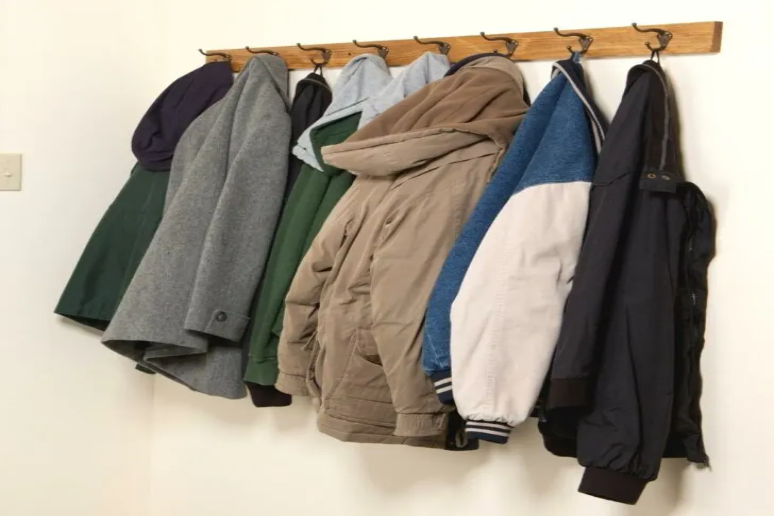
Usually, Molly Bolts are medium-weight anchors which are designed for medium-weight objects, mainly from 25 to 50 pounds. Actual weight depends on two forces, sheer and tension. Tension is the force that helps to pull the bolt out of the wall, whereas sheer force is the weight/force that lies flat against the wall pulling on the bolt
2. Toggle Bolts
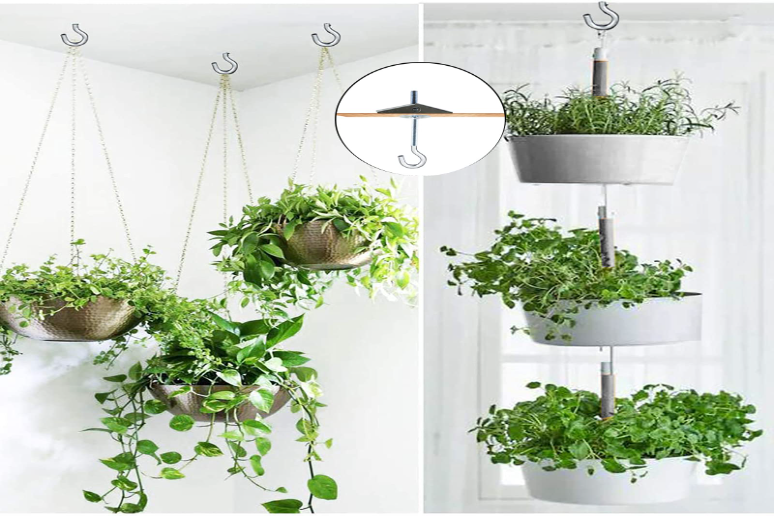
Toggle Bolt’s design and weight depend on two factors of the bolt, and that is its size and length. Out of the two, the diameter is a more important factor as it determines how much of the weight can the bolt holds like ⅛ inch bolt can hold only up to 30 pounds, whereas ½ inch can hold up to 105 pounds. The length of the bolt determines whether it can pass through the wall and properly secure anchoring.
How to Use These Bolts?
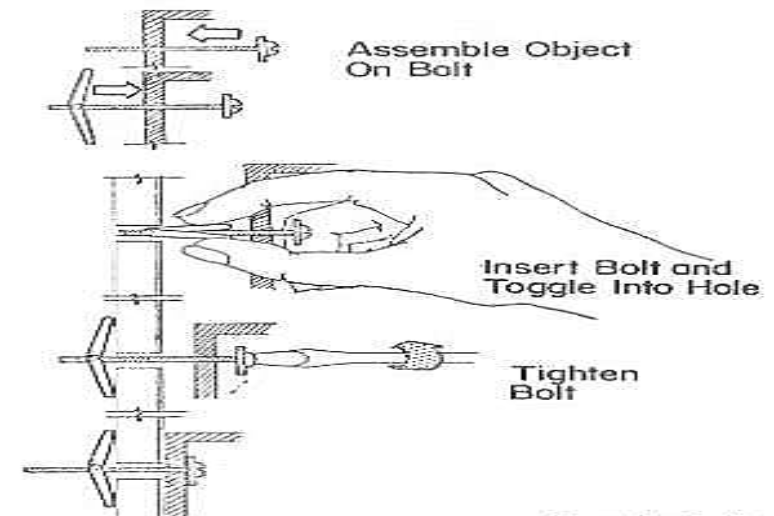
1. Molly Bolts
Installing and using Molly is relatively simple, and here is how you can do it:
- Mark the location: You need to mark the place where you plan to hang your object on the wall. Use a level or a tape measure to ensure complete accuracy.
- Drill a Hole: Use a driller to drill a hole in the wall to match the size of the Molly Bolt sleeve. Drilling a slightly smaller hole can ensure a snug fit.
- Inset the Bolt: Insert the Molly Bolt into the hole and then tighten the screw using a screwdriver or a drill. Don’t over-tighten the screw, or you might end up damaging the wall and the anchor. You would know when to stop when you feel a little resistance.
- Remove the Screw: Remove the screw from the bolt and attach your object to the wall using the same screw. Make sure the bolt is long enough to go through the wall.
2. Toggle Bolts
In comparison to Molly Bolts, installing Toggle Bolts is quite tricky. Here are the steps to do this tough task:
- Mark the location: You need to mark the place where you plan to hang your object on the wall. Use a level or a tape measure to ensure complete accuracy.
- Drill a Hole: Use a driller to drill a hole in the wall to match the size of the Toggle Bolt wing when folded. Drilling a slightly larger hole can ensure a smooth insertion.
- Attaching Object and Bolt: Attach the object to the bolt using a nut and washer.
- Insert the Bolt: Fold the wings of the bolt and insert them through the hole with a little pressure. Use a wire or string to hold the wing together.
- Tighten the Bolt: Once inserted, pull the bolt a little to make sure it is fully opened. Tighten the bolt with a screwdriver until fully secured.
How to Remove These Bolts?
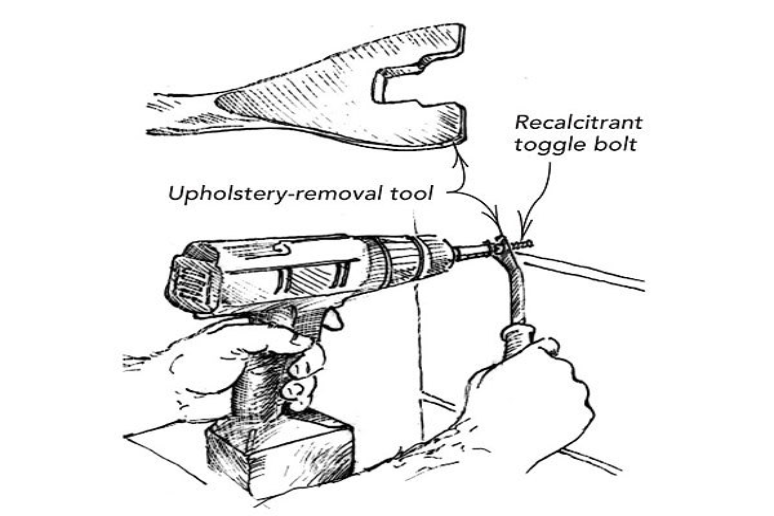
1. Molly Bolts
While Toggle Bolts are hard to install, Molly Bolts are hard to remove. Here is how to remove them:
- Remove the head of the bolt: Insert one side of a small needle nose plier into the bolt and use the other side to grab the outer edge, and wiggle aggressively. The top will come off.
- Drive the Molly into the Wall: Place a blunt rod or a nail over the molly and tap gently with a hammer until the bolt falls out of the wall on the other side.
2. Toggle Bolts
While installing them was tight, removing them was quite easy. The only con is that the wing will drop inside the hollow wall, can’t be retrieved, and would need to cut the wall if needed.
Use a screwdriver or a drill to loosen the bolt until it comes out of the wall.
What to Choose Toggle Bolts or Molly Bolts for Most Common Applications?
1. Smoke Alarm
They are generally lightweight items. So, using an in-anchor or tap-in anchor is more than sufficient. In this case, both Toggle Bolts and Molly Bolts can be used.
2. Shelving
This is the scenario where it depends completely on whether the shelves are heavy-duty or something light just for decoration. In the case of a heavy-duty shelve, use a Toggle Bolt; however, for a lightweight shelve, use Molly Bolts.
3. Picture Frame
When it comes to picture frames or photo frames, it depends upon the size of the frame. For smaller frames, use molly bolts. However, use toggle bolts for heavier frames above 50 pounds.
4. Wall-Mounted Light Fixtures
For these kinds of fixtures, the safest option is to use Toggle Bolts on drywall or on plaster.
5. Door Chimes
Normal tap-in and screw-in anchor works perfectly, but in between Toggle Bolts and Molly Bolts, both can be used.
6. Curtain Rods Support
Toggle Bolts and Molly Bolts both can be used for the support of the curtain on its rod. However, it all depends upon the weight of the curtain along with the rod it is on.
Alternative to These Two Bolts
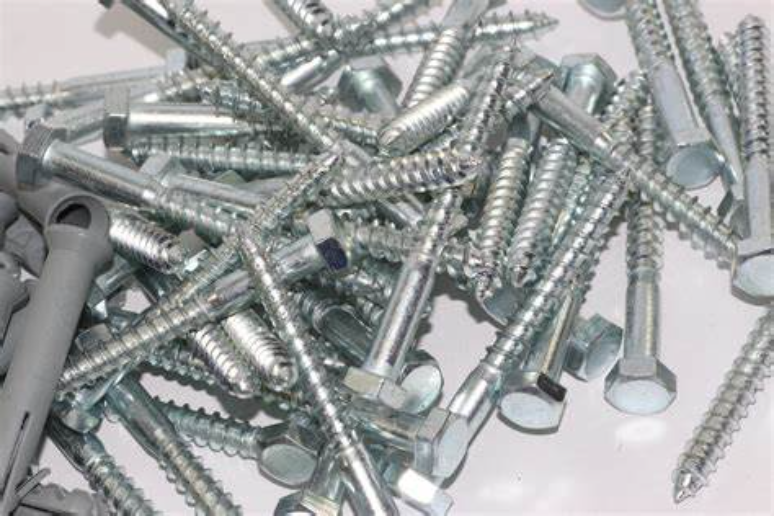
1. French Cleats (Split Battens)
As an alternative to mounting items to the wall, you can use this method as well. It is basically done by mounting a batten on the wall and another batten on the item that is fixed to the wall via a sister batten. The two battens are joined by a 45-degree angle that separates them from one another.
It is beneficial to use a French cleat because it allows the items to be easily hung on the wall and removed from it. Additionally, you can install a long batten that runs between the studs or use a heavier fixing point in order to hold the batten in place.
2. Wall Plugs
Molly Bolts and Toggle Bolts are the strongest forms of fasteners, but wall plugs are a notch below them in terms of strength. Although they are more difficult to install, they are also much cheaper and much easier to use. It is possible to get them in a variety of sizes depending on what kind of screws you will be using.
In order to install the plug, you simply need to drill a hole with a diameter that matches that of the plug and hammer it into places.
Conclusion
The decision comes over one thing, and that is how heavy or light the object is as you are about to mount it and don’t want it to fall.
Molly Bolts and Toggle Bolts both have some similarities and some differences that affect their performances and suitability for different situations. While Molly is easy to install, they are harder to remove and can hold the object up to a certain load or otherwise will fall, whereas Toggle Bolts, though hard to install and useless once used, can hold a heavy object and gives more support.
Both Molly Bolts and Toggle Bolts have their cons and pros, but in the end, the decision depends upon what you want to use and what your wall allows you.
Hope that this article helped you to understand between the two bolts and helps you choose your choice easily, and helps you adore beautiful things on your wall.

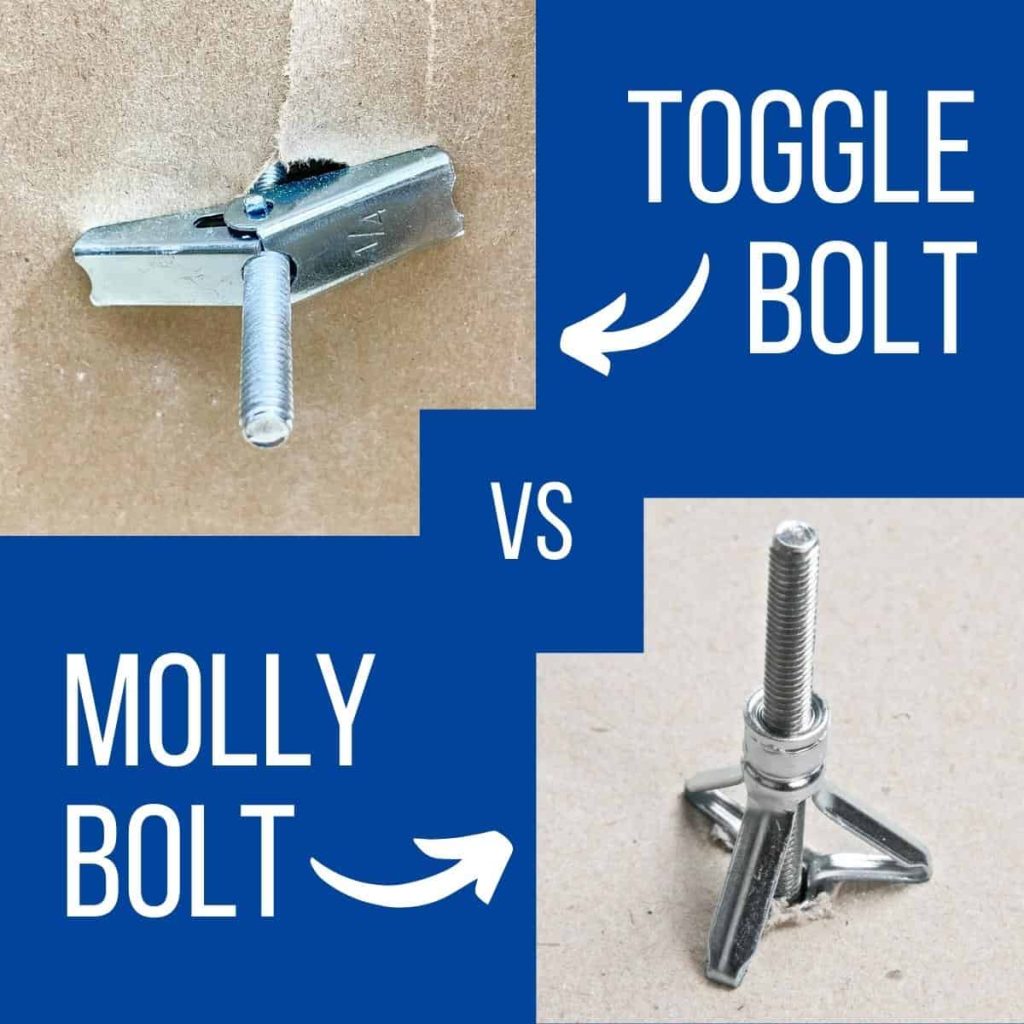
![12 DIY Strawberry Planter [with plans!]](https://waterbuckpump.com/wp-content/uploads/2023/08/12-DIY-Strawberry-Planter-with-plans-150x150.jpg)
